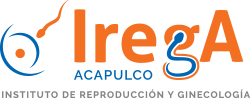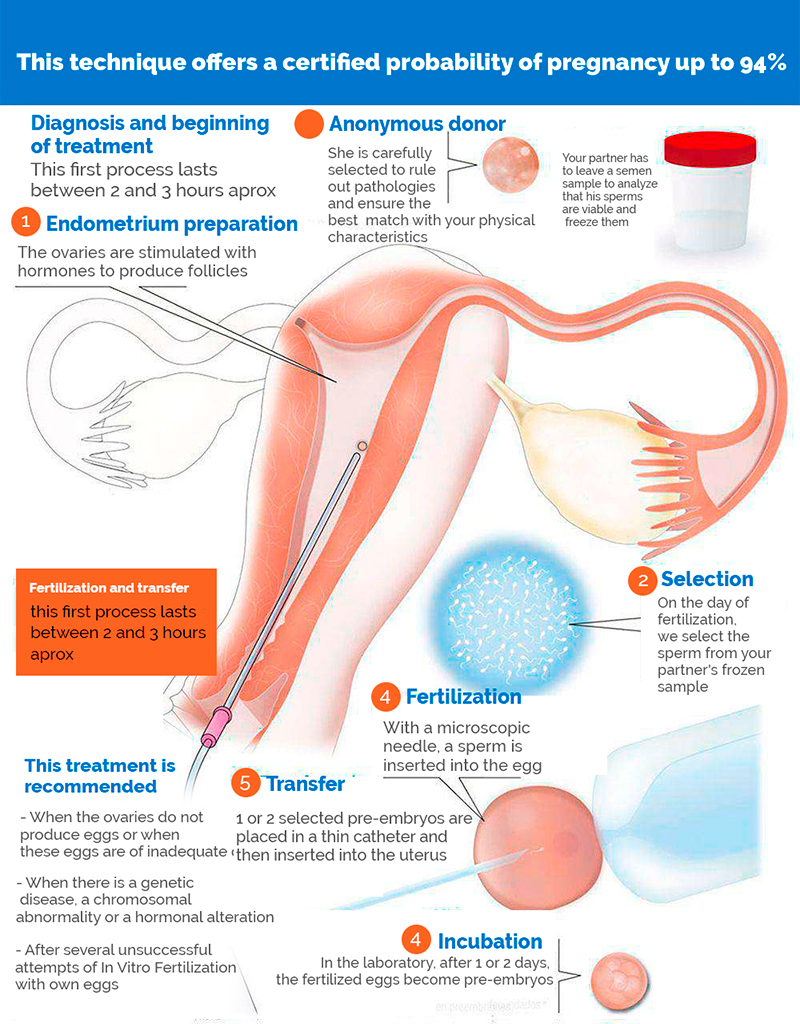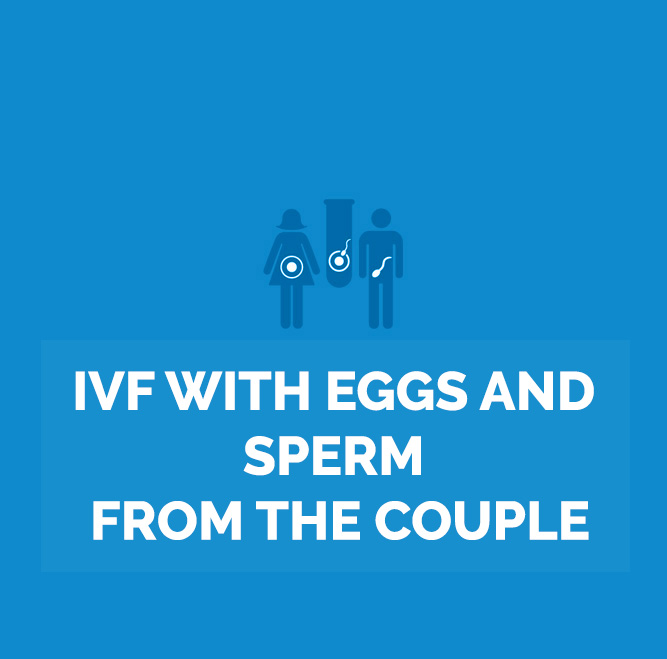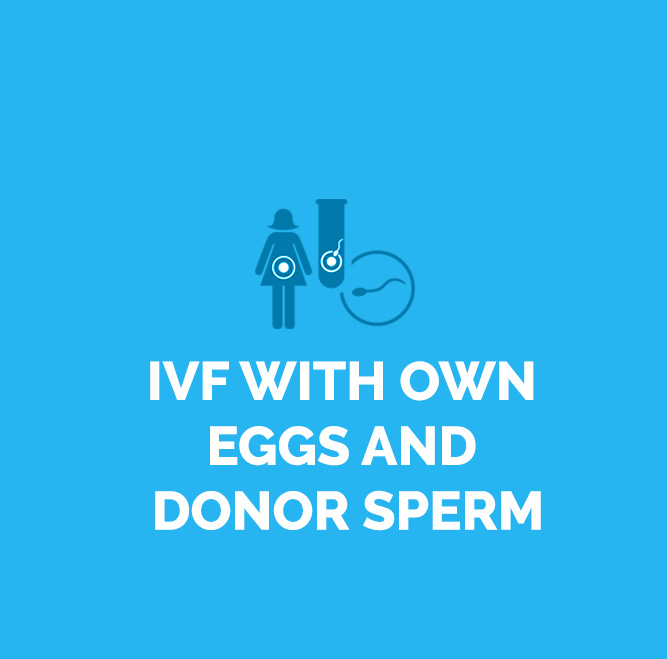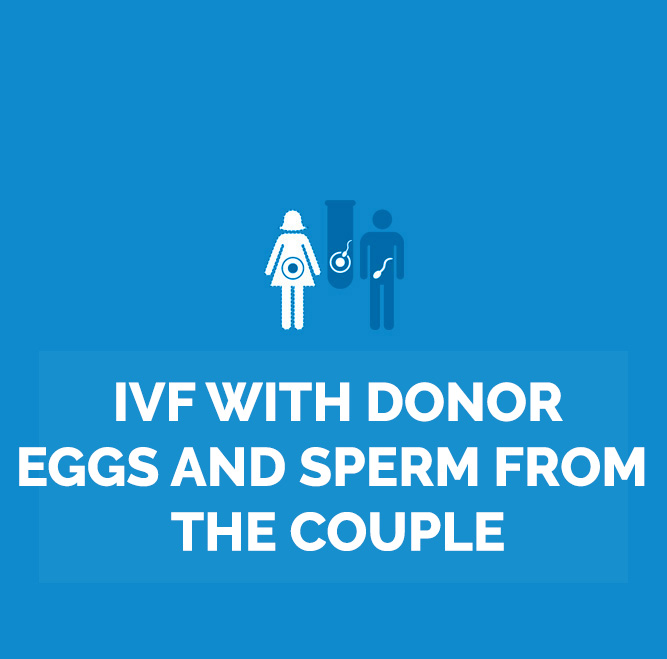In Vitro fertilization with donor eggs and partner's semen is a laboratory technique that involves fertilizing the eggs from a donor with your partner's sperms. Once fertilized, the egg becomes a pre-embryo and it's transferred to the previously prepared uterus for further development. Spanish legislation establishes that egg donation must be anonymous (there can be no knowledge between recipient and donor, either now or in the future) and voluntary (the marketing of eggs and embryos is prohibited by the law of Spain. Donors must have between 18 and 35 years old and receive financial compensation for the dedication and time allocated to the donation. This technique offers a certified probability of pregnancy up to 94%.
In which cases is this recommended?
This type of IVF is recommended when you have ovarian problems and need to resort to donor eggs. It may be that your ovaries do not produce eggs or that the eggs are of inadequate quality (see causes of female sterility). This technique is also used if you have a genetic disease, a chromosomal abnormality or a disease that contraindicates ovarian stimulation.
IVF STEPS
1. Donor selection
Donors are selected based on very strict medical criteria and complementary tests are performed to rule out important pathologies that could have repercussions on the health of the newborn. One of the distinguishing factors of our donation program is trying to achieve the greatest possible similarity between the physical characteristics (phenotypes) of the donor and the recipient. It is what we call making a good "phenotypic matching". These results are reviewed by a doctor who also checks the absence of genetic diseases known so far in the personal or family history, while a psychologist evaluates the donor's mental health. Finally, the donor signs a consent, in accordance with with the Spanish law, where she agrees to donate her eggs to a couple who wants a child and will never try to know their identity.
2. Donor treatment
Donors must undergo ovarian stimulation treatment for about two weeks, which consists of the administration of subcutaneous injections of hormones and is followed up by ultrasound and blood tests, if necessary. The oocytes are retrieved by puncture.
3. In Vitro Fertilization and embryo transfer
As in IVF (with the couple's eggs and semen), once the eggs have been extracted from the donor, they are cultured for a few hours, while the semen is being prepared to isolate the sperm. If the technique to be used is ICSI (microinjection of one sperm into each mature egg), the eggs are denuded, which means that the cells surrounding their surface are removed, and one sperm is injected into each of them. In our center we perform ICSI in 99% of cases, and we don't do otherwise unless a different process is indicated. In the case of performing a classic In Vitro Fertilization, the sperms (between 50,000 and 100,000) are placed in the culture environment where the eggs are, and the next day, we check how many of them have been fertilized. Obviously, greater number of eggs and better quality of sperms, means greater chances of obtaining embryos.
This technique has the drawback of offering lower fertilization rates, since the sperm is not introduced directly into the egg. Only on the day after the eggs extraction and the ICSI(Intracytoplasmic Sperm Injection) we will know the number of the fertilized ones. Over the next 2-3 days these fertilized eggs develop into pre-embryos ready to be transferred to the uterus. On the day of the transfer, the pre-embryos with the best development characteristics are selected. . According to the law, we can transfer up to 3 pre-embryos but the most common average number is 2. The pre-embryos are inserted into a fine catheter and are channeled by the gynecologist to the end of the uterus(anesthesia is not necessary). Of the transferred pre-embryos, usually only one of them is implanted, but sometimes more than one gets there, which would lead to a multiple pregnancy.
4. Cryopreservation n
The non-transferred pre-embryos are frozen using liquid nitrogen (this cryopreservation is known as vitrification) and are subsequently stored in an embryo bank appropriately identified. These pre-embryos can be used in subsequent cycles if pregnancy is not achieved on the first attempt. Obviously, the treatment to prepare the uterus for a frozen embryo transfer is much easier since the stimulation and extraction of oocytes is not necessary.
SUCCESS RATE
IREGA ACAPULCO
- Cerrada de Cumbres #104 Fracc. Farallón, C.P. 39690
IREGA CANCÚN
- Hospital Galenia Planta Baja Av. Tulum Lote 01 Maza. 01 SM 12 Fracc. Sta. Maria Sike Esq. Nizuc, C.P. 77505
USA & CANADA
- USA 011 52 (744) 484 4471
- USA 011 52 (744) 488 11 14
- CANADA 01 52 (744) 484 4471
- adanoliveros52@gmail.com.mx

